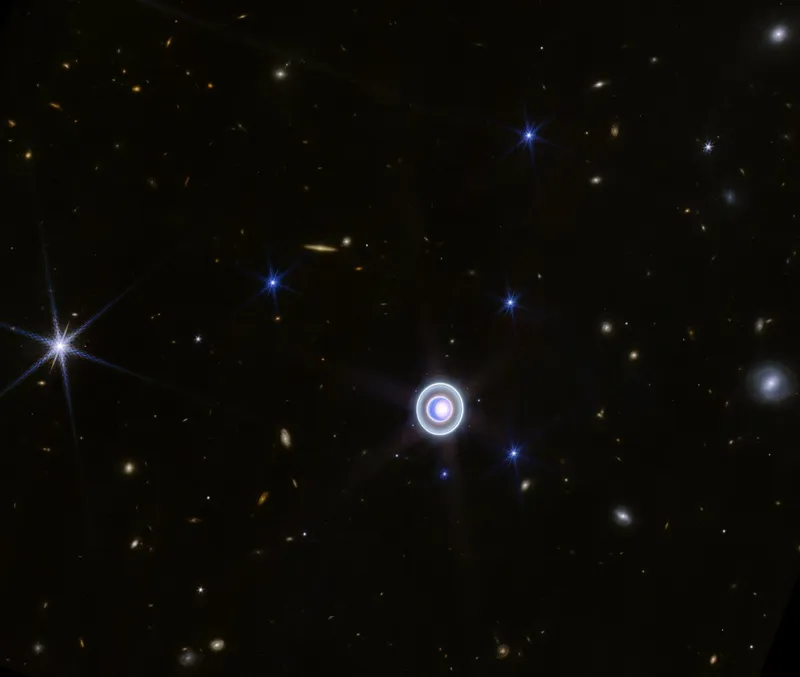The James Webb Space Telescope has captured an incredible new image of the planet Uranus showing its north polar cloud cap in infrared light.
Also in the image are Uranus’s incredible rings and a collection of Uranus's moons, which appear as tiny pinpricks of light in and around the ring system.
See the latest James Webb Space Telescope images

Uranus in infrared
We’re used to seeing Uranus as a light blue disc, but the view of the planet through Webb’s infrared eye is startlingly different.
In this new image of Uranus we can see the planet’s seasonal north polar cloud cap, including the white inner cap and a dark lane in the bottom of the polar cap.
Webb has also managed to capture a host of bright storms that can be seen near and below the southern border of the polar cap.

Uranus’s spin and solstice
Relative to the other planets of the Solar System, Uranus spins on its side, which is why we can see its rings face-on (compared to, for example, our view of Saturn’s rings).
It takes about 84 Earth years for Uranus to make one orbit of the Sun, and for about a quarter of one Uranus year, the Sun shines over one pole.
This plunges the other side of Uranus into a long, dark winter lasting about 21 Earth years.
Uranus’s polar cap becomes more prominent as it approaches solstice, as this is when the planet’s pole begins to point toward the Sun and receives more sunlight.
Uranus will reach its next solstice in 2028, so studies like this latest Webb capture - and more to follow - give astronomers a chance to track changes in these features.
By learning more about the seasonal and meteorological features on Uranus and how they change over time, astronomers hope to be able to untangle the secrets of the planet’s atmosphere.
